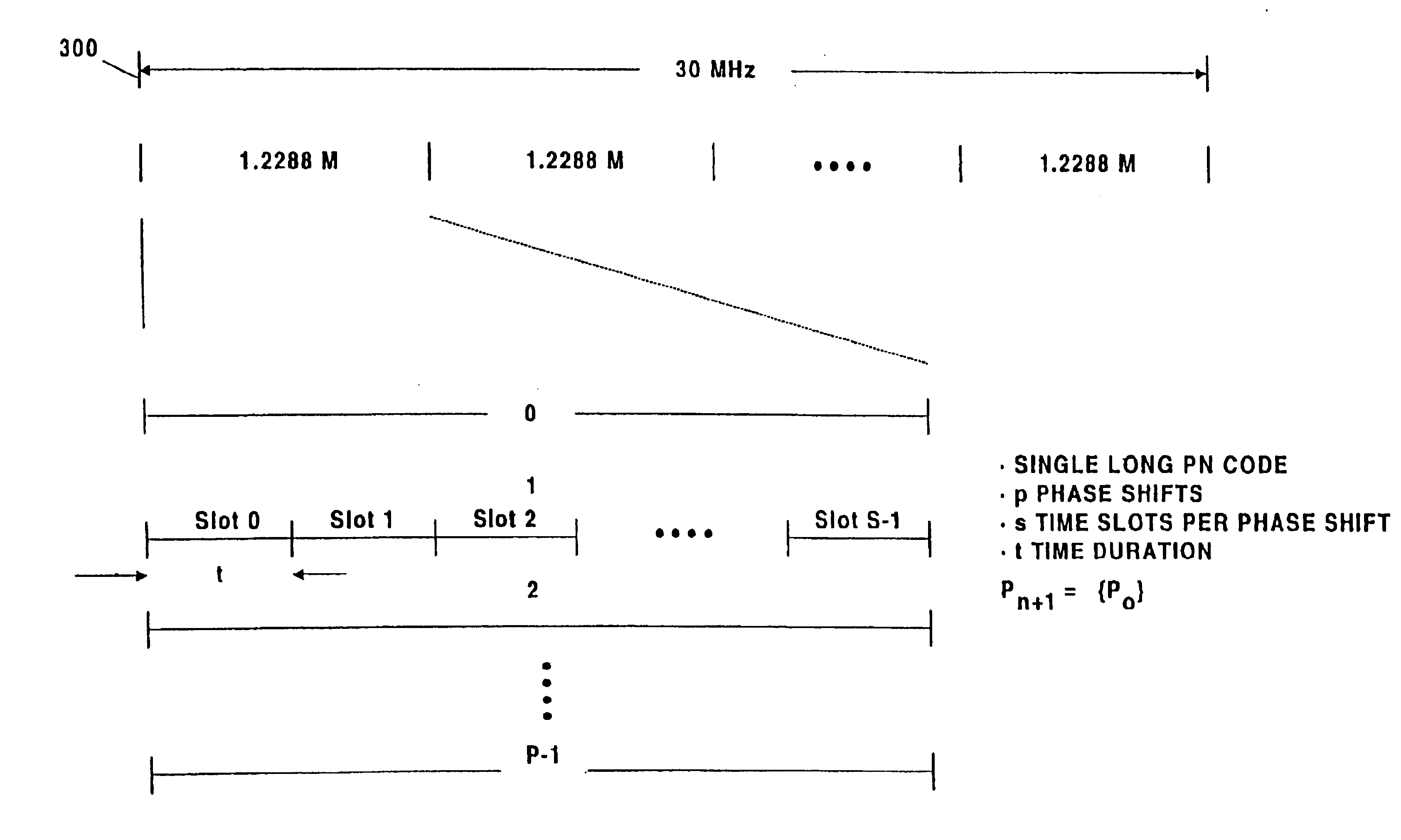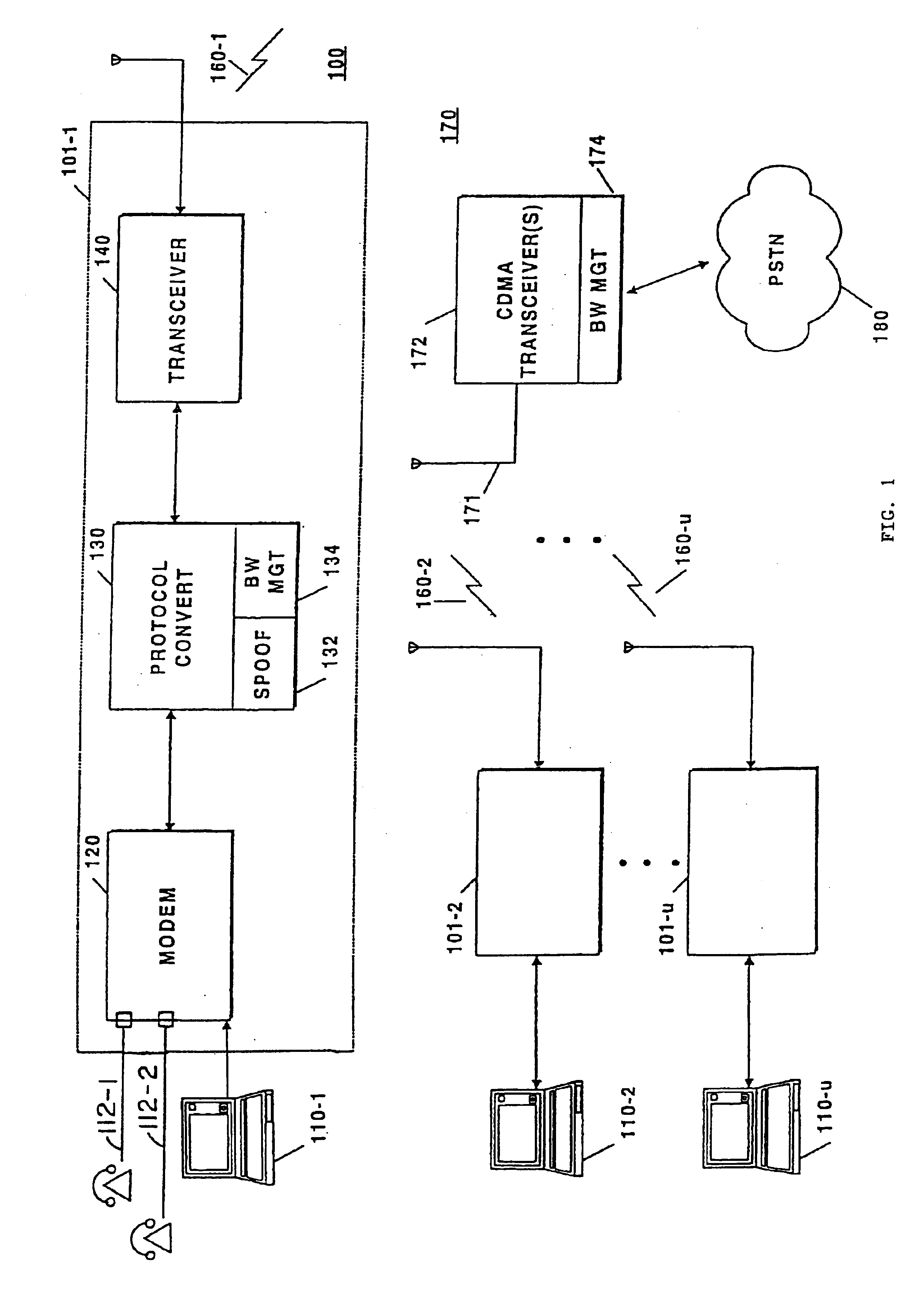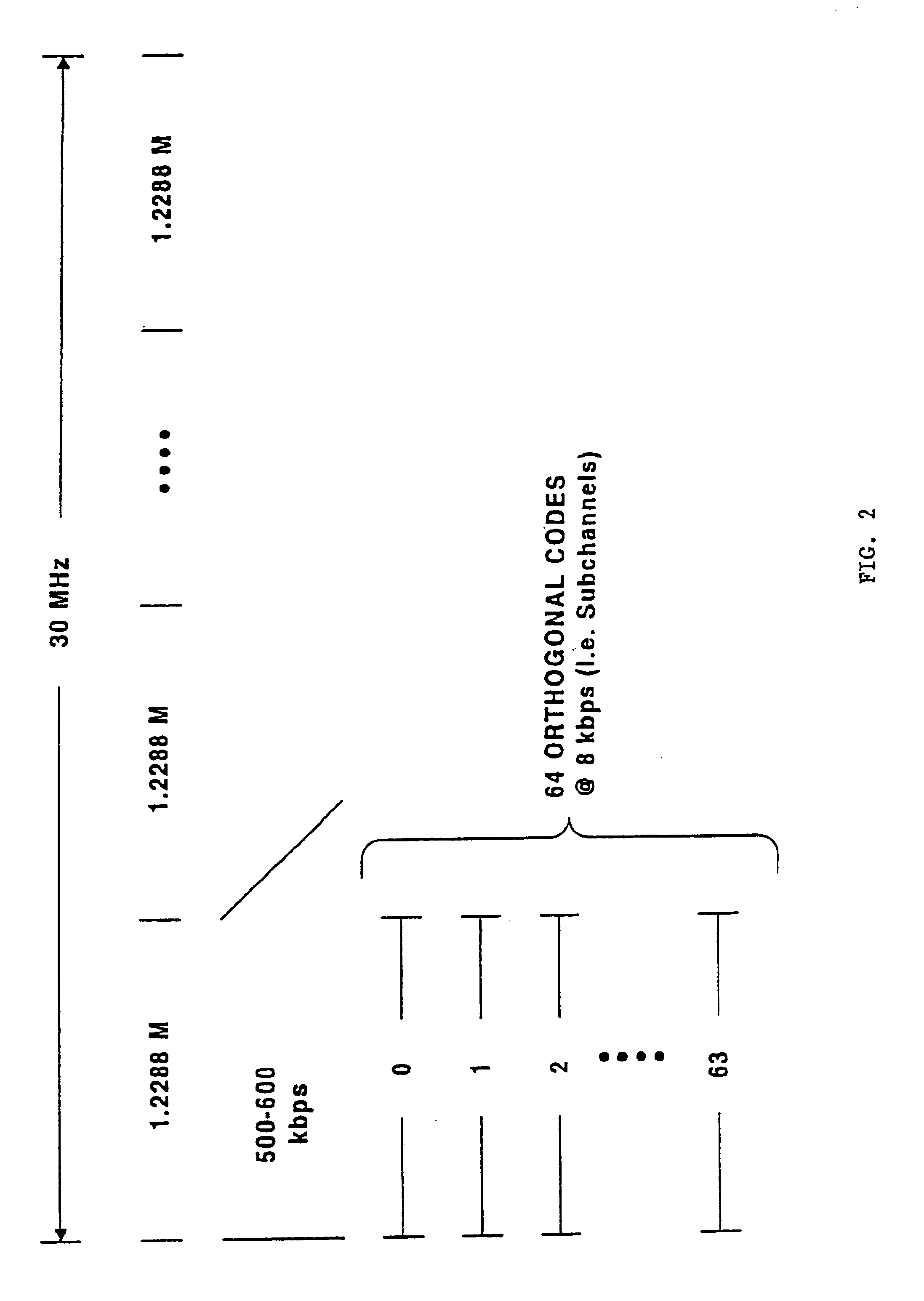Fast acquisition of traffic channels for a highly variable data rate reverse link of a CDMA wireless communication system
a technology data rate reverse link, which is applied in the field of fast acquisition of traffic channels for a highly variable data rate reverse link of cdma wireless communication system, can solve the problems of not being able to adapt to the voice grade service available in most homes or offices, and not being able to provide high speed data service in the business environment over the wireline network
- Summary
- Abstract
- Description
- Claims
- Application Information
AI Technical Summary
Benefits of technology
Problems solved by technology
Method used
Image
Examples
Embodiment Construction
[0026]Turning attention now to the drawings more particularly, FIG. 1 is a block diagram of a system 100 for providing high speed data and voice service over a wireless connection by seamlessly integrating a digital data protocol such as, for example, Integrated Services Digital Network (ISDN) with a digitally modulated wireless service such as Code Division Multiple Access (CDMA).
[0027]The system 100 consists of two different types of components, including subscriber units 101-1, 101-2, . . . , 101-u (collectively, the subscriber units 101) and one or more base stations 170. The subscriber units 101 and base stations 170 cooperate to provide the functions necessary in order to provide wireless data services to a portable computing device 110 such as a laptop computer, portable computer, personal digital assistant (PDA) or the like. The base station 170 also cooperates with the subscriber units 101 to permit the ultimate transmission of data to and from the subscriber unit and the P...
PUM
 Login to View More
Login to View More Abstract
Description
Claims
Application Information
 Login to View More
Login to View More - R&D
- Intellectual Property
- Life Sciences
- Materials
- Tech Scout
- Unparalleled Data Quality
- Higher Quality Content
- 60% Fewer Hallucinations
Browse by: Latest US Patents, China's latest patents, Technical Efficacy Thesaurus, Application Domain, Technology Topic, Popular Technical Reports.
© 2025 PatSnap. All rights reserved.Legal|Privacy policy|Modern Slavery Act Transparency Statement|Sitemap|About US| Contact US: help@patsnap.com



